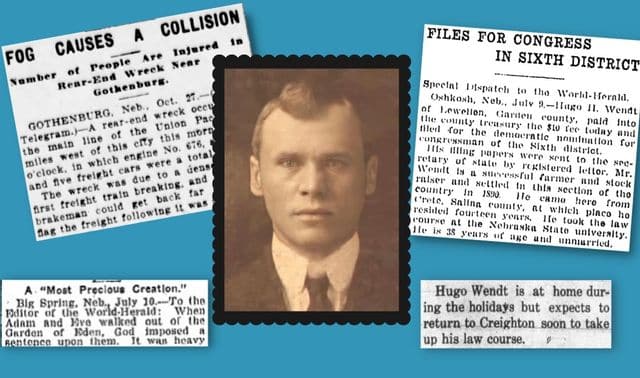Mahalia Sellers was a woman on the move. She lived in at least six states during her 97 years, leaving quite a family history maze for her third-great-granddaughter Sandra Clapp. Clapp and a cousin have found glimpses of Sellers in census records and a few other documents, but no concrete evidence of her maiden name or parents’ names. We’ll take a look at what they’ve found and see if we can dig up some additional untapped sources for tracing their mobile ancestor.
Retracing steps
To decide what to do next, you have to look at what you’ve already done. Plotting an ancestor’s known dates and locations on a timeline can point you to new resources. Clapp has mainly searched the Internet due to physical limitations, but she’s done relatively well for herself. She found a death certificate for Mahalia Kimball, who died a widow April 11, 1917, in Butler, Mo. It gives a birth date of Sept. 19, 1819, in Hanover, Grafton County, NH. The parents’ names, frustratingly, were unknown to the informant, a Mrs. Carrie Green.
Next, Clapp searched federal census records, available every 10 years from 1790 through 1930 (except 1890; almost all those returns were destroyed in a fire). The 1850 census for Jackson Township, Porter County, Ind., lists “Mahala” as age 29 and born in New Hampshire. She’s living with her husband, John Sellers, 34; children, Charles H. Sellers, 13, and Mary J. Sellers, 11, both born in New York; and a Sarah Trobridge, 31. A Kimball family appears on the same census page.
You should habitually check every census taken during an ancestor’s lifetime. In 1860, “Mahala” is in Vernon, Van Buren County, Iowa, with John Sellers and Emily Darrah, age 14. The Sellers’ daughter Mary lives next door with husband Sanford Twist. Come 1880, a single “Mahela Kimball,” 58, resides in Arago, Richardson County, Neb., with her 63-year-old sister, Sarah Kimball. Clapp believes Mahalia resumed using her maiden name after her husband died — a not-so-uncommon practice during the late 19th and early 20th centuries.
Twenty years later, “Mahala” is in the 1900 census at age 79, living with son-in-law Twist and his family in Butler, Bates County, Mo. Twist is listed as a widower, and “Mahala” has no living children. Finally, in 1910, 89-year-old “Mahala” lives in Mount Pleasant Township, Bates County, Mo., with Carrie Green.
Crossing state lines
Clapp hasn’t found a birth certificate for Mahalia or her husband, or the couple’s marriage certificate — anything that would confirm her maiden name. She’ll probably need to use resources unavailable online.
Since Mahalia lived in several states, Clapp should search for records available for each place. State archives and vital-records office Web sites are a great start. On New Hampshire’s vital-records site <www.sos.nh.gov/vitalrecords>, we find statewide vital-record-keeping didn’t begin there until 1901 — no wonder Clapp couldn’t locate a birth record. New York didn’t begin statewide registration of births, marriages and deaths until 1880. Therefore, Clapp should look for church, town or county records. The Church of Jesus Christ of Latter-day Saints’ Family History Library <www.familysearch.org> has microfilmed Hanover, NH, records from 1761 to 1847; Clapp can rent these and other FHL microfilms through her local Family History Center (for locations, see <www.familytreemagazine.com/fhcs>).
The New Hampshire State Library <www.nh.gov/nhsl> has sources Clapp could research in person or request by mail. She also could see if someone on Books We Own <rootsweb.ancestry.com/~bwo> would do a lookup for her. Pauline Johnson Oesterlin’s New Hampshire Marriage Licenses and Intentions, 1709-1961 (Heritage Books) may have the marriage information she needs.
Clapp should consult her timeline and search state archives for all Mahalia’s residences. For research help in each place, she can use Family Tree Magazine‘s State Research Guides, available on CD or as downloads from our back issue store <www.shopfamilytree.com>. FamilySearch also has great state research outlines <www.familysearch.org/eng/search/rg/frameset_rhelps.asp>. Cyndi’s List, <cyndislist.com>, Linkpendium <www.linkpendium.com> and USGenWeb <usgenweb.org> provide links to locality-specific sources.
Following family
Prior to the 20th century, it’s typically more difficult to trace a woman, so Clapp should research Mahalia’s husband and his family. Neighbors often married each other and traveled together, so Sellers family records might name Mahalia or her parents.
Before 1850, censuses named only heads of household — usually, a father or husband — with tick marks for others. The 1840 census for Whitehall Township, Washington County, NY, lists a John Sellers as head. William Sellers is in a nearby family — possibly John’s parents and siblings.
New York state censuses, on FHL microfilm (some surviving counts span 1825 to 1925), might help. John’s death after 1860 could be Civil War-related, prompting Mahalia to file for a pension. Clapp should check the Civil War Soldiers and Sailors System index <www.itd.nps.gov/cwss> and the Civil War pensions index on FHL microfilm, Footnote <footnote.com> (which is adding pension record images) and Ancestry.com <Ancestry.com >. If Clapp discovers Mahalia or her children filed for a pension, she can order copies of the file for a fee through the National Archives and Records Administration (NARA) <archives.gov>.
Although Mahalia moved around, she stayed connected to family. Their records could hold the clues to her maiden name and other details. Clapp speculates Mahalia’s children died before 1900; she’ll want to seek death records from county or state vital-records offices. She also should explore land and probate records for Mahalia’s son-in-law Sanford Twist, and research the Kimball family in the 1850 census. A relative who moved around can be difficult to trace, but creating a timeline, searching for place-based resources and following extended family can keep you on the trail.




